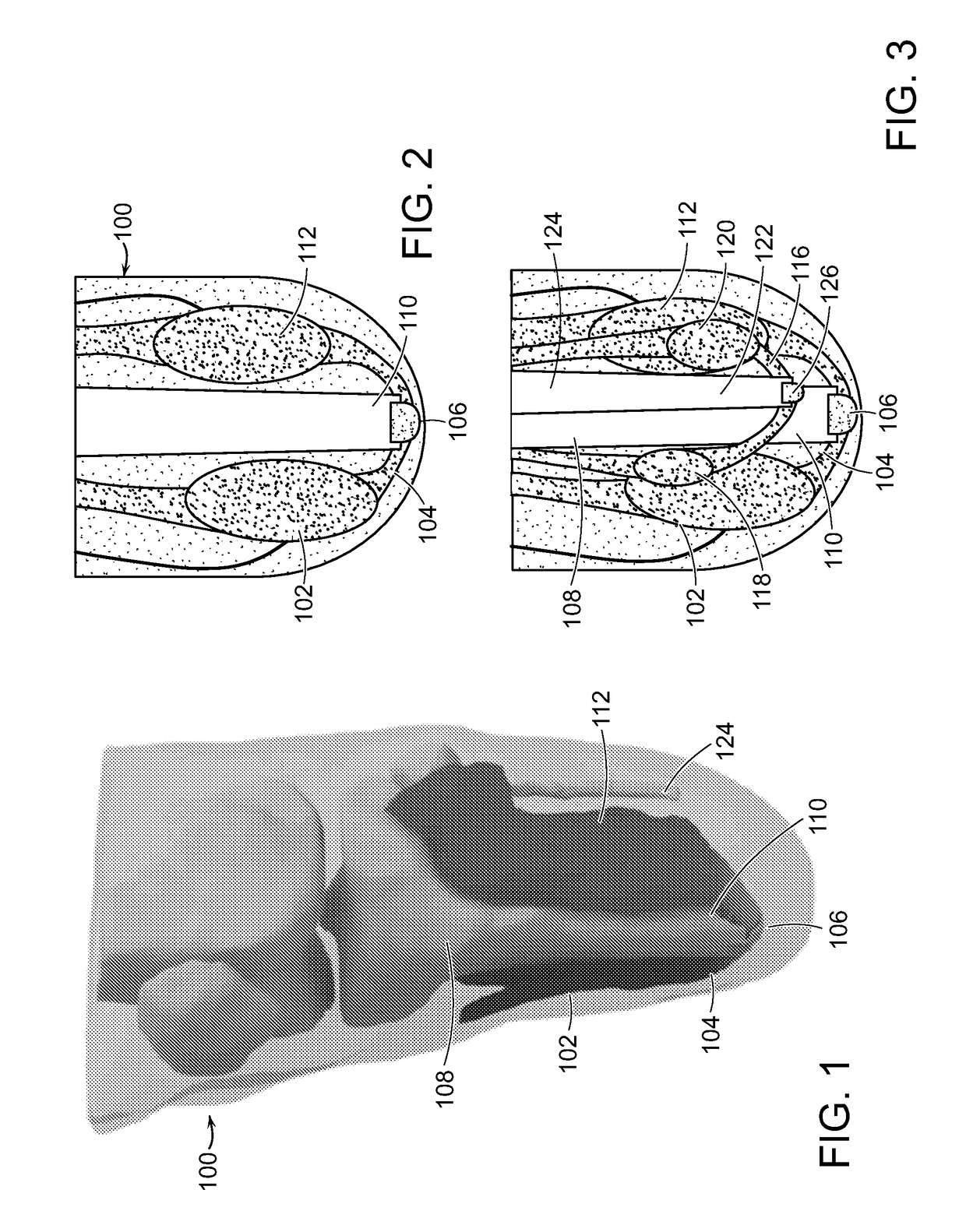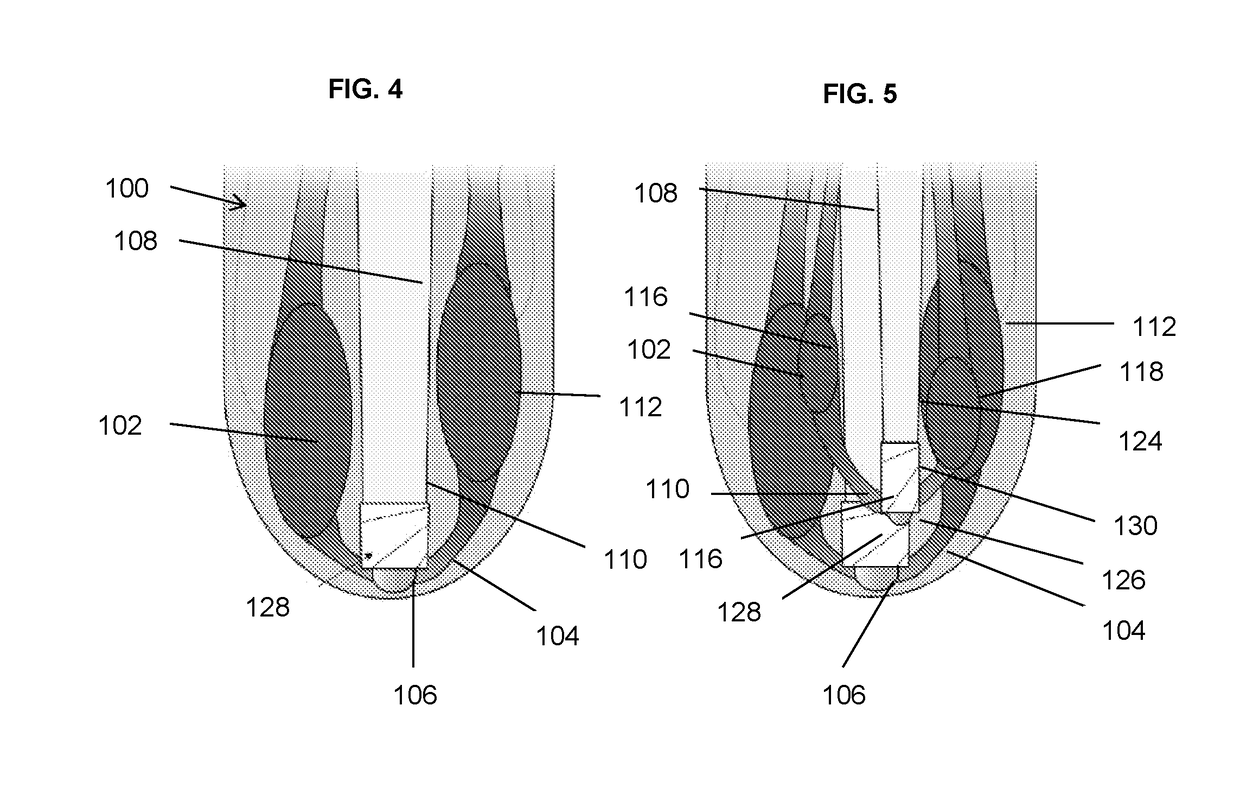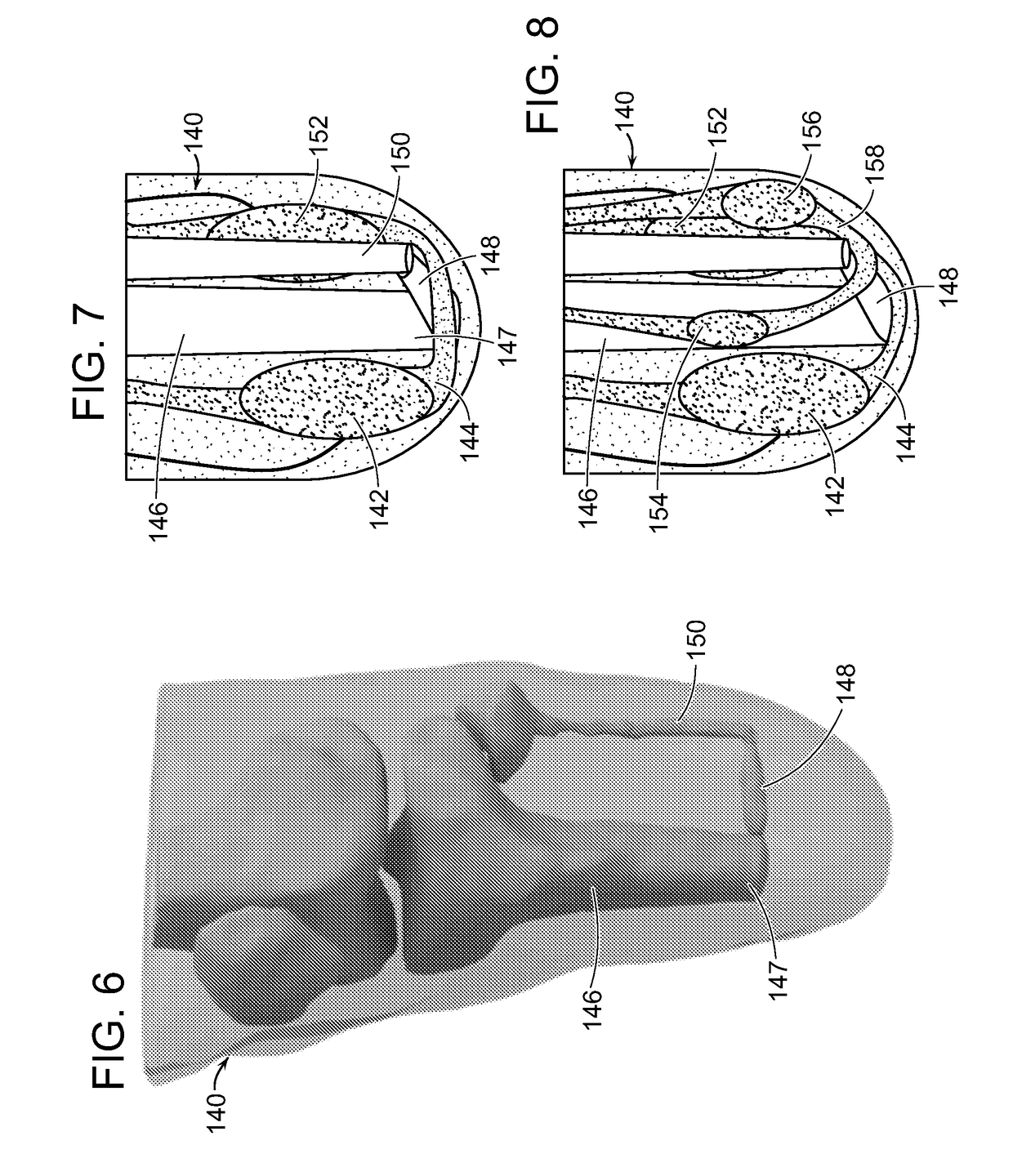Method And System For Providing Proprioceptive Feedback And Functionality Mitigating Limb Pathology
a technology of proprioception feedback and functional mitigation, applied in the field of surgical paradigm for limb amputation, can solve the problems of acute high stress in the soft tissue, lack of technology to restore proprioception feedback, and limited development of implantable devices, so as to improve the fidelity of perceived joint position, enhance human physicality, and restore the effect of natural muscle control function
- Summary
- Abstract
- Description
- Claims
- Application Information
AI Technical Summary
Benefits of technology
Problems solved by technology
Method used
Image
Examples
embodiment 1
oupling of Agonist-Antagonist Residual Muscle Pairs Across Surgically Constructed Sliding Surfaces
[0071]A first embodiment of this invention is a method that constructs an architecture in the residual musculature that can be used to provide proprioceptive feedback from an external limb prosthesis.
[0072]In this embodiment, the invention includes a method for reconstructing the biological proprioceptive feedback paradigm in a subject, such as a person, with limb amputation. The method includes mechanically linking the distal ends of residual musculature across a sliding surface, so that contraction of the agonist muscle causes stretching of the antagonist and vice versa. By allowing such an agonist-antagonist interaction, the antagonist muscle that is stretched provides length, speed and force proprioceptive feedback to the amputee user, via each muscle nerve supply, to communicate muscle action and joint movement. Alternatively, when the antagonist muscle contracts, the agonist muscl...
embodiment 2
sseointegrated Sliding Surface for Mechanically-Coupled Agonist-Antagonist Muscle Pairs
[0084]Osseointegration is a proven methodology that has existed for years in the fields of medical dentistry, orthopedic surgery, and prosthetic technology. The core principle involves insertion of a biologically inert synthetic material into porous bone tissue. The body's natural reaction to the foreign material causes integration of the living tissue and the synthetic insert, forming a robust mechanical bond. In this embodiment of the invention, sliding surfaces for mechanically-coupled agonist-antagonist muscle pairs are secured to the distal end of a bone, such as a tibia or a fibula, by osseointegration. Exemplary versions of this embodiment of the invention include:
[0085]1. Forming rings. Muscle couplings, whether made of muscle, tendon, or a synthetic material, slide through rings formed by osseointegration into the distal end of the bone, which thereby inherently prevent dislodgement of th...
embodiment 3
sseointegrated Distal Load-Bearing Attachment
[0088]Another embodiment of the method of the invention includes embedding an implant in the residual limb to broaden the load-bearing surface of the distal residuum and thereby spread relatively high compression forces across a larger load-bearing surface.
[0089]In this embodiment of the method of the invention, an extension (either biologic or synthetic) is embedded in the skeletal system to increase comfort in compressive distal load-bearing. Two examples of this embodiment of the invention are described below:
[0090]1. Osseointegrating a structure that is shaped geometrically to increase load-bearing surface area. Concentrated areas of high pressure are eliminated by increasing the surface area through which the compressive load is transmitted. FIG. 14 shows an example of a system formed by this embodiment of the method of the invention. FIGS. 15 and 16 show examples of how the system may be combined with a synthetic sliding surface att...
PUM
 Login to View More
Login to View More Abstract
Description
Claims
Application Information
 Login to View More
Login to View More - R&D
- Intellectual Property
- Life Sciences
- Materials
- Tech Scout
- Unparalleled Data Quality
- Higher Quality Content
- 60% Fewer Hallucinations
Browse by: Latest US Patents, China's latest patents, Technical Efficacy Thesaurus, Application Domain, Technology Topic, Popular Technical Reports.
© 2025 PatSnap. All rights reserved.Legal|Privacy policy|Modern Slavery Act Transparency Statement|Sitemap|About US| Contact US: help@patsnap.com



